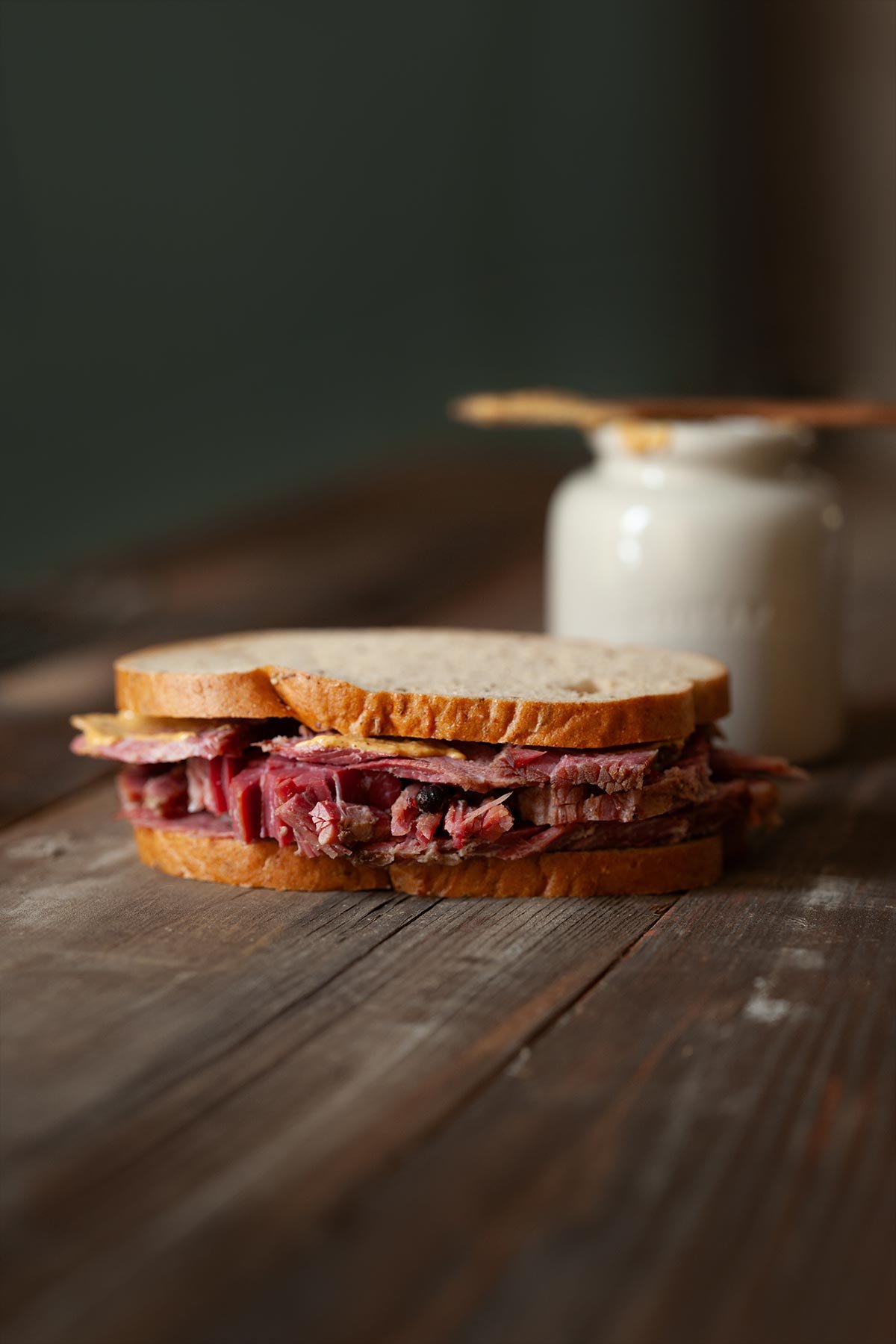
Jump To
- What Is Corned Beef?
- Why This Recipe Works
- Notes on Ingredients
- How to Cook Corned Beef Brisket
- Your Corned Beef Questions Answered
- ⏲ Store-Bought Corned Beef Hack (Only 3 Hours)
- Pro Tips
- Storage & Reheating
- How to Serve Corned Beef Brisket
- More Corned Beef Recipes
- Tell Me What You Think
- Video: How to Make Corned Beef
- Homemade Corned Beef Recipe
- Recipe Testers’ Reviews
What Is Corned Beef?
Corned beef is brisket brined in salt water and spices—think peppercorns, mustard seed, coriander, and garlic. The name “corned” comes from the large salt grains once used for curing the beef.
While its roots trace back to Ireland (where the dish was mainly for export), it’s most famously associated with Irish-American cuisine, thanks to immigrants in the U.S. who found beef cheaper here than in Ireland. Over time, corned beef became a St. Patrick’s Day classic, admired for its salty, savory flavor and easy adaptability—perfect in everything from sandwiches to hearty dinners and leftover hashes.
It’s similar to your favorite pastrami recipe but has a unique flavor and texture.

Why This Recipe Works
This homemade corned beef recipe takes a brisket—often a tough, stubborn cut—and transforms it into a tender, flavor-packed feast thanks to a simple yet balanced salt, sugar, and spice brine. The pink curing salt adds both color and safety, ensuring the meat cures evenly without any unwanted bacteria.
After a few days of leisurely marinating in this aromatic bath, the brisket has a subtly sweetness with a peppery warmth that’s downright addictive. Plus, the low-and-slow cooking method (stovetop or slow cooker) keeps the meat moist and the process blissfully hands-off.
It’s practically foolproof and guaranteed to make you wonder why you ever bought premade corned beef in the first place.
Notes on Ingredients
- Kosher salt–This makes up the foundation of your brine, allowing the meat to retain moisture and become tender, ensuring perfect corned beef. To avoid making a brine that’s too salty, you must weigh your salt. Crystal sizes can vary from brand to brand, significantly changing the salt level in the brine when measured by volume.
- Sugar–Using sugar in the brine helps to tenderize the meat and add flavor.
- Pink curing salt–This gives the meat its pinkish hue, but its purpose isn’t merely cosmetic. This salt, which contains sodium nitrite, stops bacterial growth during the lengthy curing process and helps to preserve the meat’s flavor and texture. Don’t even think about omitting it.
- Beef brisket–For best results, make your corned beef with first-cut or “flat-cut” brisket. It is leaner than point-cut brisket. If you do make it with point cut, be sure to trim away any excess fat.
How to Cook Corned Beef Brisket
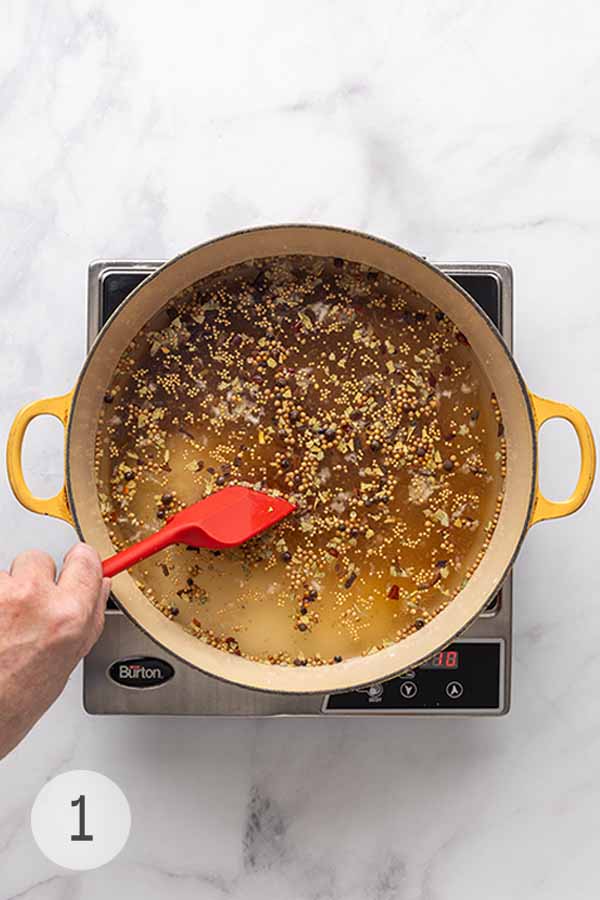
- Toast the peppercorns, mustard seeds, and coriander seeds in a skillet, then use the flat side of a large knife to smash them. Mix them with the remaining spice blend ingredients. Combine 1/2 gallon of water, kosher salt, sugar, pink salt, garlic, and 2 tablespoons of pickling spice in a large pot.
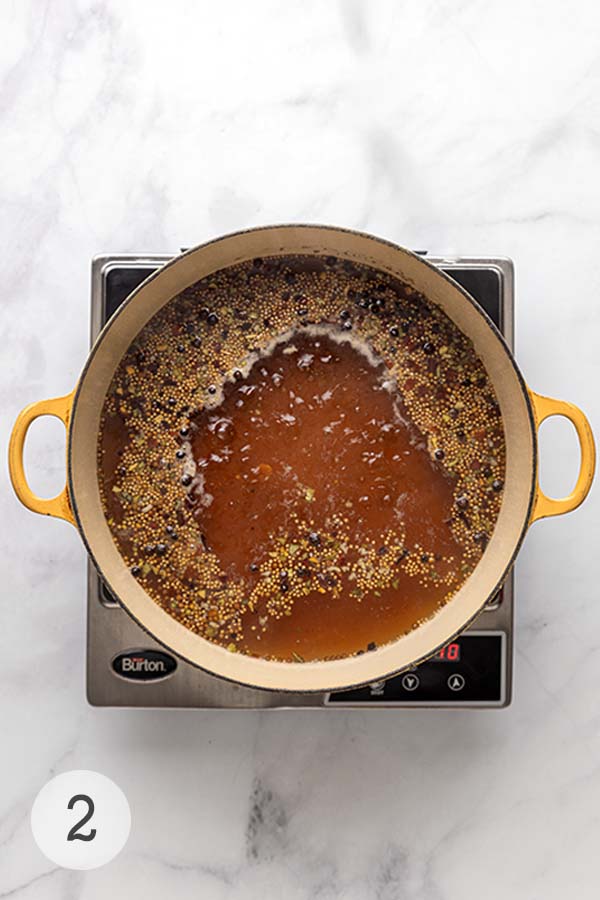
- Bring the brine to a simmer, stirring to dissolve the salt and sugar.
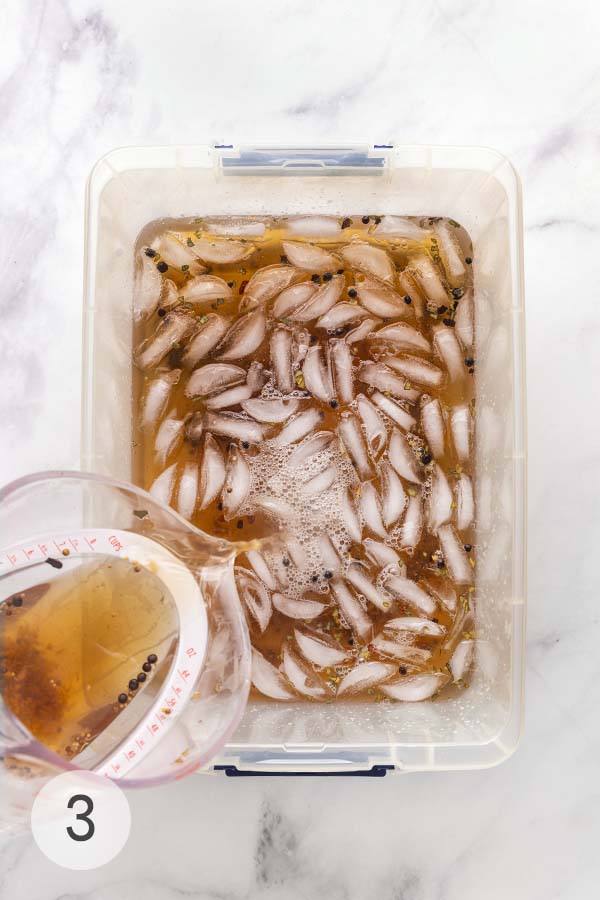
- Combine the brine with 1/2 gallon of ice and water in a container large enough to hold the brisket.

- Add the brisket to the cold brine.
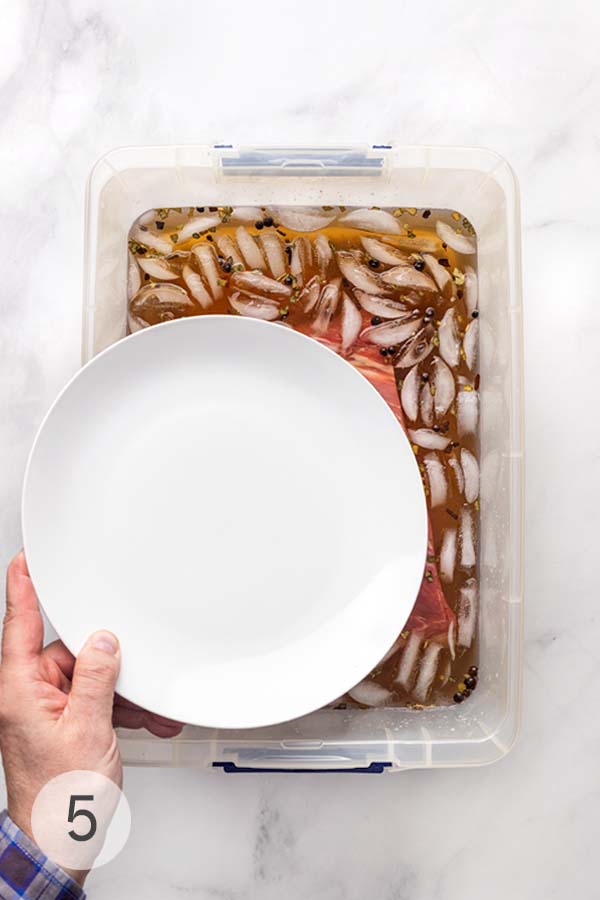
- Submerge the brisket in the brine. I use a large plate.

- Cover and chill for 5 days, flipping the brisket occasionally.
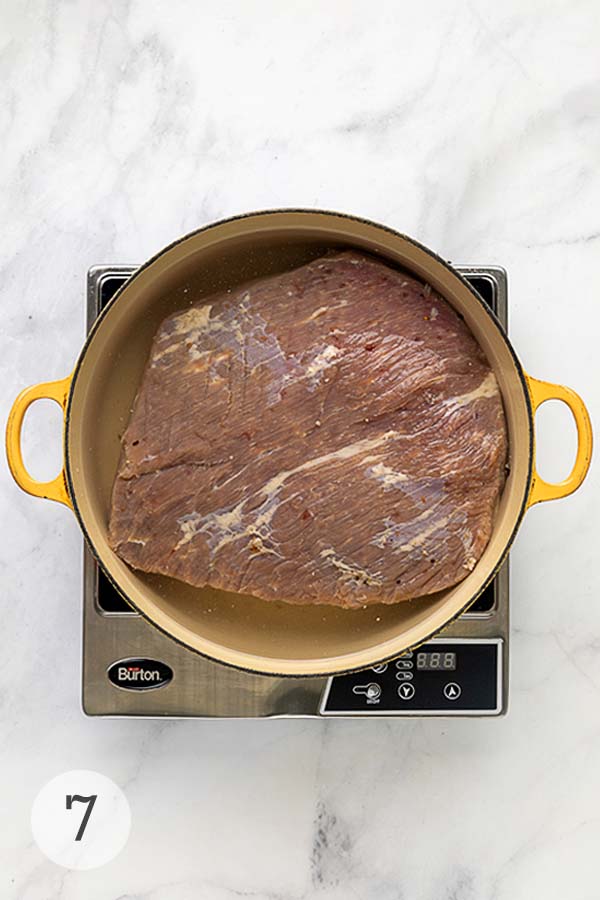
- Drain and rinse the brisket. Place the brisket in a pot large enough to hold the meat, and add enough water to cover it.
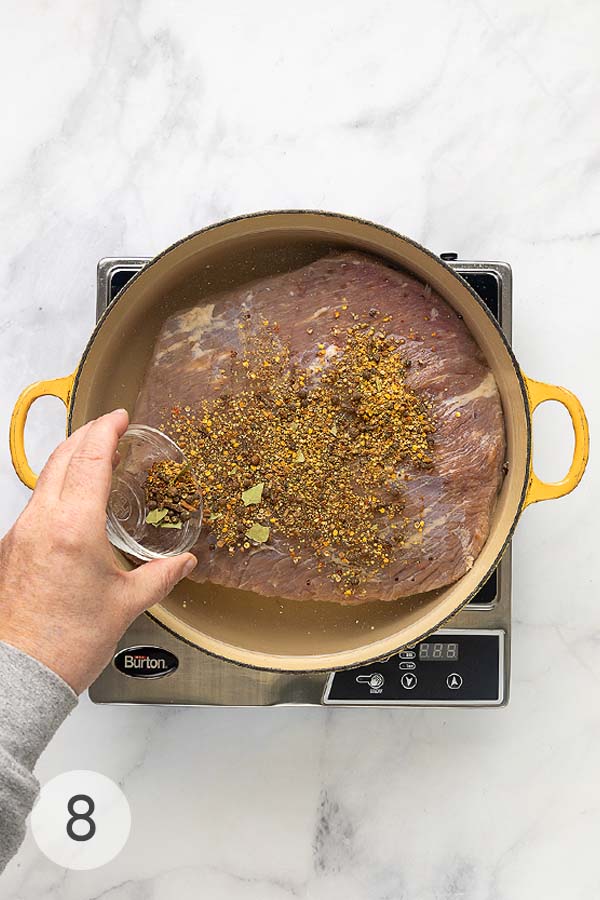
- Add 2 tablespoons of pickling spice, cover, and bring to a simmer. Cook until fork tender, replenishing the water, if needed.
Your Corned Beef Questions Answered
First-cut brisket, sometimes called the “flat cut,” is the leaner, flatter portion of a whole beef brisket. It boasts a relatively even thickness, making it ideal for slicing against the grain after cooking. The “second cut,” aka the “point cut,” contains more fat, or deckle, and sits on top.
Pink salt is a curing salt containing nitrite. It preserves corned beef’s color, flavor, and freshness and, most importantly, prevents harmful bacteria growth. Look for it under names like Tinted Cure Mix, Prague Powder #1, or Curing Salt #1. Don’t confuse it with Himalayan pink salt, which is a regular salt.
☞ And, please, don’t confuse this pink salt with Himalayan pink salt, which is entirely different.
To make corned beef with cabbage and potatoes, render the fat from some bacon that you’ve cut into matchstick-size strips in a pot over medium heat. Toss in some large wedges of green cabbage and cook, turning as needed, until the edges are lightly browned. This will impart a little extra flavor oomph to the cabbage.
Add some of the reserved cooking liquid from the corned beef to the pot. Then toss some chunked potatoes and the sliced corned beef in with the cabbage, cover, and cook until the cabbage is tender. (If you prefer the potatoes not pick up any cabbage flavor or color, boil them separately in salted water.)
That steaming liquid transforms into a lovely sauce. If you like, stir in a tablespoon of Dijon mustard for a touch of richness.
Nestle your brined brisket into the slow cooker and add enough water to cover it (if it’s too big, simply cut off a smaller portion!). Toss in 2 tablespoons of your corned beef seasoning mix and cook on low until fork-tender, about 7 hours. Reserve that flavorful cooking liquid for serving if you like.
Slice the corned beef and enjoy warm, or cool, wrap, and refrigerate for up to a week.
Want more slow-cooker tips? Check out tester Jackie G.’s comment below – she turned her leftover brisket into homemade pastrami!
⏲ Store-Bought Corned Beef Hack (Only 3 Hours)
So, you want to save yourself 4 1/2 days of waiting for this incredible corned beef recipe? No problem. If you have a pre-cured corned beef (the kind that comes vacuum-sealed at the grocery store), go ahead and toss that little spice packet it comes with—trust me, the flavors are subpar compared to this homemade spice mix. Pop your brisket into a large pot, add enough water to cover, stir in two tablespoons of my pickling spice (below), and let it simmer gently for about 3 hours or until it’s melt-in-your-mouth tender. You’ll still score a rich, savory corned beef without the wait. Enjoy!
Pro Tips
- If you find it challenging to keep the brisket submerged in the brine, place something heavy (a plate or a few canned goods are great for this!) in a sealed plastic bag and set it on top of the brisket to weigh it down.
- If your brisket is too big to fit into the brining container in one piece, cut it in half.
- This homemade corned beef recipe is suitable for gluten-free and dairy-free diets.
Storage & Reheating
Corned beef can be stored tightly wrapped in plastic or aluminum foil in the refrigerator for up to 1 week. For longer storage, freeze individual portions tightly wrapped in plastic or sealed bags for up to 6 months.
How to Serve Corned Beef Brisket
There are tons o’ ways to enjoy homemade corned beef. For a traditional meal, serve it sliced with cabbage and potatoes, or enjoy it in a Reuben sandwich made with rye bread, Swiss cheese, sauerkraut, and Thousand Island dressing.
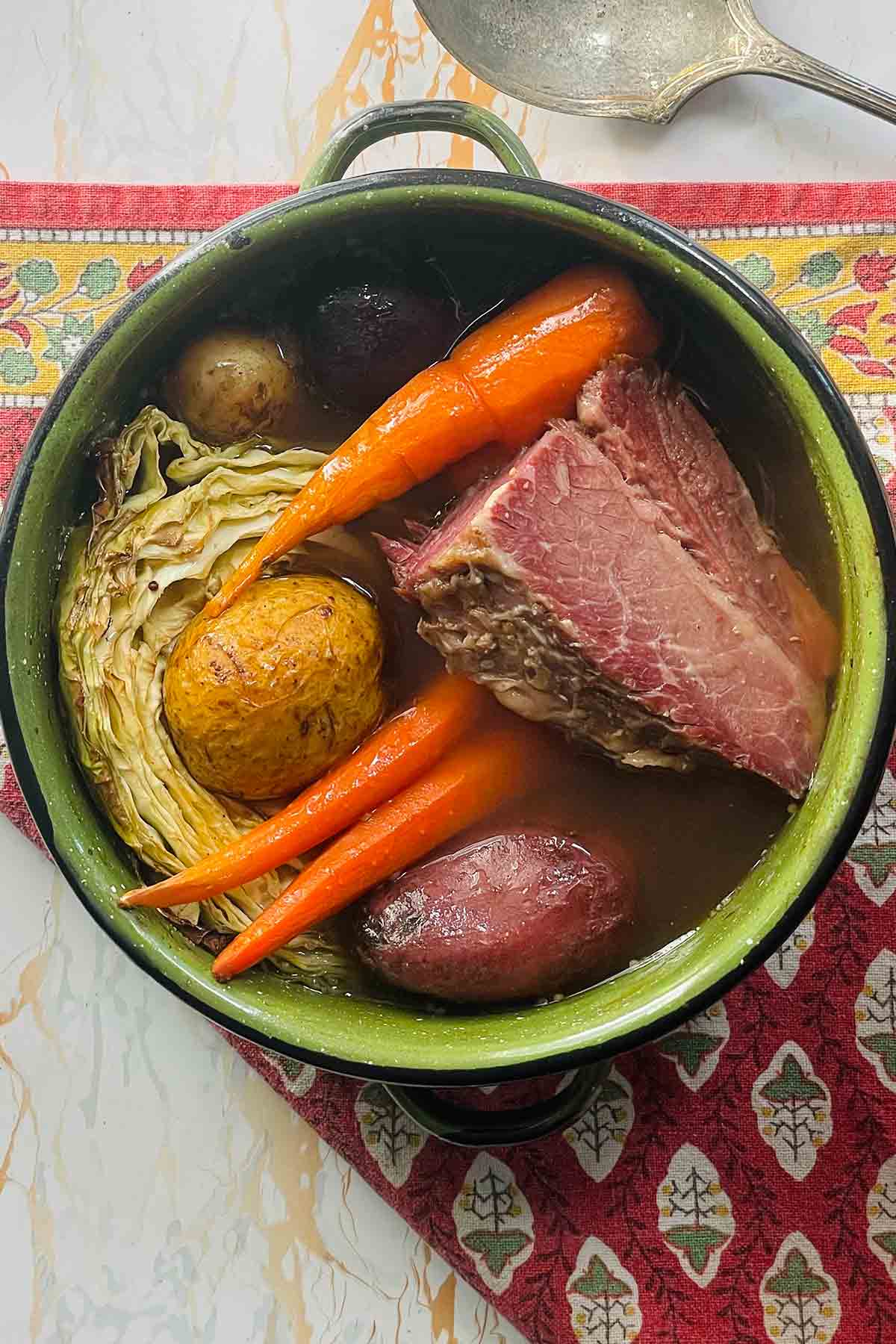
Tell Me What You Think
If you give this marvelous homemade corned beef a whirl (or any dish from Leite’s Culinaria), I’m all ears! Did it rock your St. Patrick’s Day table or become the star of your Sunday supper? Share the details—along with your best photo—in the comments below. Don’t forget to leave a star rating, too!–David
I make corned beef for my husband. I personally don’t care for it. This recipe has totally changed my mind! The meat was so tender and so flavorful. I will never make corned beef a different way. Looks like we will have a new tradition in our family!
Alison M
Video: How to Make Corned Beef
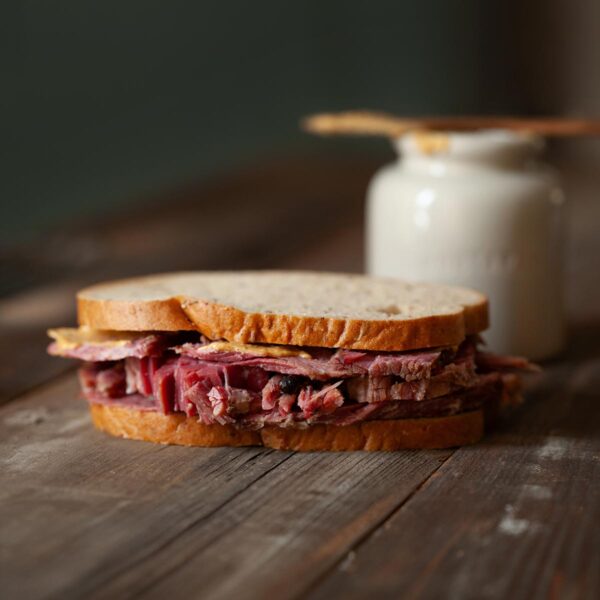
Homemade Corned Beef
Equipment
- Slow cooker (if following the slow cooker method)
Ingredients
For the pickling spice
- 2 tablespoons black peppercorns
- 2 tablespoons mustard seeds
- 2 tablespoons coriander seeds
- 2 tablespoons crushed red pepper flakes
- 2 tablespoons allspice berries
- 1 tablespoon ground mace
- 2 small cinnamon sticks, crushed or broken into pieces
- 2 to 4 bay leaves, crumbled
- 2 tablespoons whole cloves
- 1 tablespoon ground ginger
For the brine solution
- 1 gallon water
- 2 cups Morton kosher salt, (or 3 1/3 cups/450 g Diamond Crystal kosher salt)
- 1/2 cup granulated sugar
- 2 teaspoons pink salt, (see FAQs)
- 3 garlic cloves, minced
- 2 tablespoons pickling spice, (see above recipe or use store-bought)
- one (5-pound) beef brisket, well-marbled first-cut
Instructions
Make the pickling spice
- In a small, dry skillet over medium heat, toast the 2 tablespoons black peppercorns, 2 tablespoons mustard seeds, and 2 tablespoons coriander seeds until the spices are lightly toasted.
- Carefully turn them onto a cutting board and carefully smash them using the flat side of a chef's knife to crack them, being careful to not let the seeds roll all over your counter and onto your floor.
- Scrape the cracked spices into a large plastic container or glass jar or other nonreactive container and add the 2 tablespoons crushed red pepper flakes, 2 tablespoons allspice berries, 1 tablespoon ground mace, 2 small cinnamon sticks, 2 to 4 bay leaves, 2 tablespoons whole cloves, and 1 tablespoon ground ginger. Stir until completely combined. Cover tightly.
Make the brine solution
- In a pot that's just large enough to hold the brisket, combine the 1 gallon water, 2 cups Morton kosher salt, 1/2 cup granulated sugar, 2 teaspoons pink salt, 3 garlic cloves, and 2 tablespoons pickling spice.
- Bring to a simmer, stirring until the salt and sugar dissolve.
- Remove the pot from the heat, let the brine cool to room temperature, and then refrigerate until the brine is completely chilled. For a quick chill: Bring 1/2 gallon of water to a simmer, add the brine ingredients, and stir until dissolved. Slide the pot off the heat and add 1/2 gallon of ice and water. Make sure the water is cool before adding the brisket.
- Place the one (5-pound) beef brisket in the chilled brine and weight it with a plate to keep it submerged. Refrigerate for 5 days, flipping the brisket once or twice.
- Remove the brisket from the brine solution, discarding the brine. Rinse the brisket thoroughly under cool running water. (Don't worry, you're just rinsing the brine solution from the surface of the brisket. The brine will continue to permeate the beef and work its considerable magic.)
Cook the corned beef brisket
- To make the corned beef in your slow cooker, see the Slow Cooker Variation in the FAQs above.To make the corned beef on the stovetop, reach once again for a pot just large enough to hold the brisket. Place the brined brisket inside and add enough water to cover the meat. Add 2 tablespoons of pickling spice and bring to a boil, then reduce the heat, cover, and gently simmer for about 3 hours, or until the brisket is fork-tender. You want to make certain that there’s always enough water to cover the brisket. You may need to occasionally replenish the water if it gets too low.
- When the corned beef is done, remove it from the cooking liquid, which can be reserved, and place it on a cutting board. Slice the corned beef and serve it warm, with cabbage and potatoes if desired (see the Variation in the FAQs) or cool it, wrap it, and refrigerate it for up to a week to use in this Reuben sandwich. It's also not too shabby in corned beef hash. You can dribble the cooking liquid over the cabbage and vegetables or cover and refrigerate the liquid and rewarm it along with your leftover corned beef.
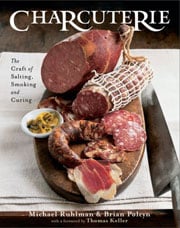
Nutrition
Nutrition information is automatically calculated, so should only be used as an approximation.
Recipe Testers’ Reviews
I decided to make the “real thing” for St. Patty’s Day this year and brined a 6-pound, well-marbled, first-cut beef brisket.
After its bath in the corned beef seasoning brine for 5 days, I decided to cook the brisket in our slow cooker instead of on top of the stove. I couldn’t fit the entire brisket in my 5 1/2-quart slow cooker, so a 3-pound chunk went into the slow cooker and the rest went back into the fridge.
At first, the brisket was submerged under the water. When I checked to see how it was doing after 1 1/2 hours, the meat had curled up and was sticking out of the water. I pushed it down, but wasn’t terribly concerned because brisket tends to shrink quite a bit. Sure enough, after 30 more minutes, the brisket was, indeed, covered with liquid.
The brisket cooked for a total of 7 hours on low. I suggest you check to see how the meat is doing along the way, even though some folks warn that you should never lift the lid of a slow cooker. I find that it does not add much cooking time at all. For me, and this particular piece of meat, at that 7 hour mark, the corned beef was tender.
Alongside the brisket I served a casserole of chopped potatoes, cabbage, and onion, which I’d sautéed in bacon fat and then finished in the oven with some Comté cheese on top. As much as we enjoyed the brisket on the first night with the casserole, we enjoyed the leftovers even more. I made this wonderful corned beef hash twice and served it with poached eggs.
So, what to do with the other remaining brisket that didn’t fit in the slow cooker? There was no question. When life gives you brined brisket, make pastrami.
I will never buy corned beef again after making this recipe. Turns out, pickling even substandard brisket with this astounding potpourri of aromatic spices will change your life forever!
I was very concerned that my brisket was going to be not good enough because when I got it home, I realized that it was graded select. I made the recipe anyways but put a layer of plastic wrap on top of the brine and brisket and then added the plate to hold it all together. I was surprised at the ease with which this came together and truly astonished at the final result.
I found the simplest way to acquire the pink salt was on Amazon. For around $10, you’ll secure enough for many, many pounds of homemade bacon and corned beef.
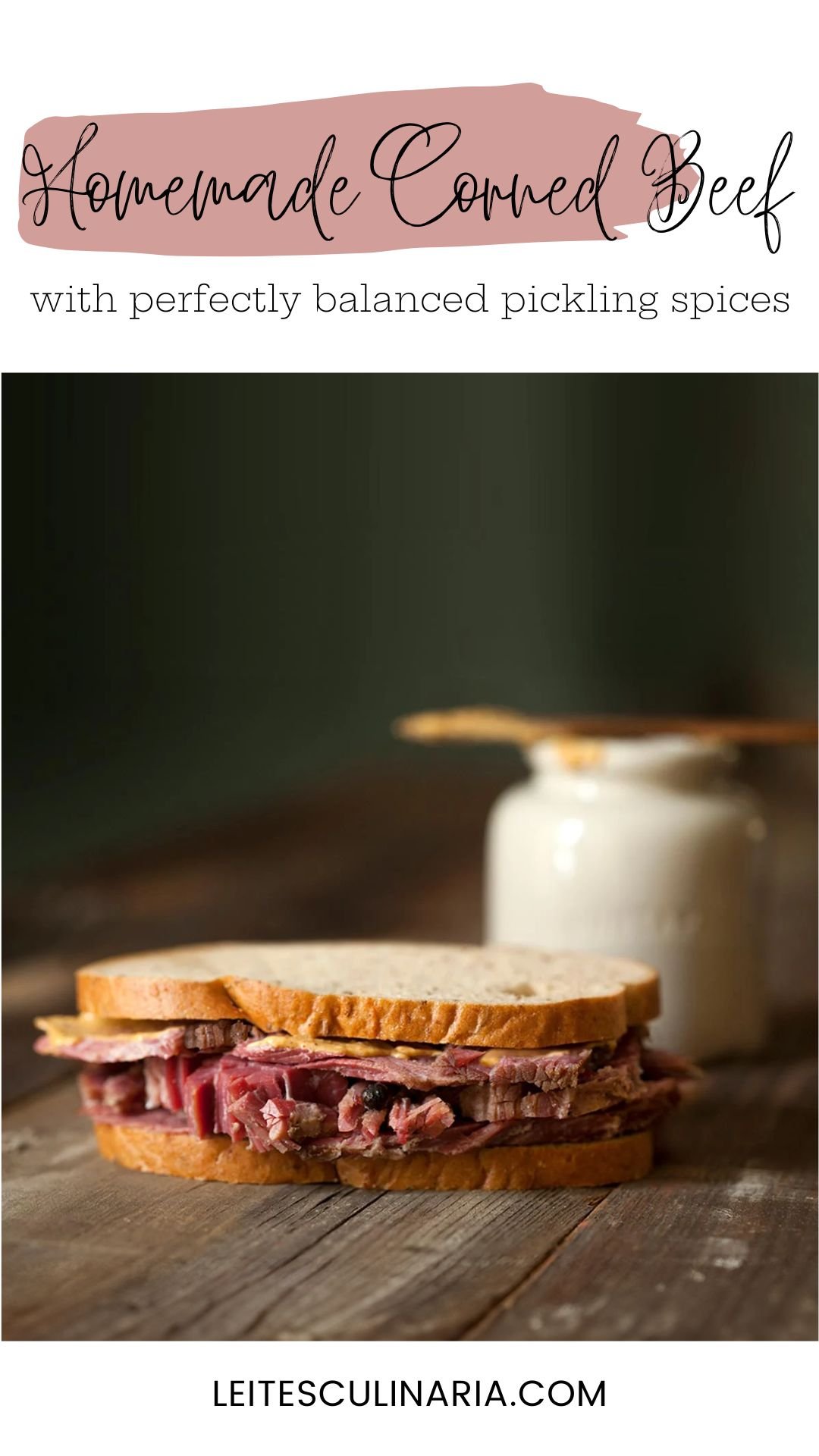

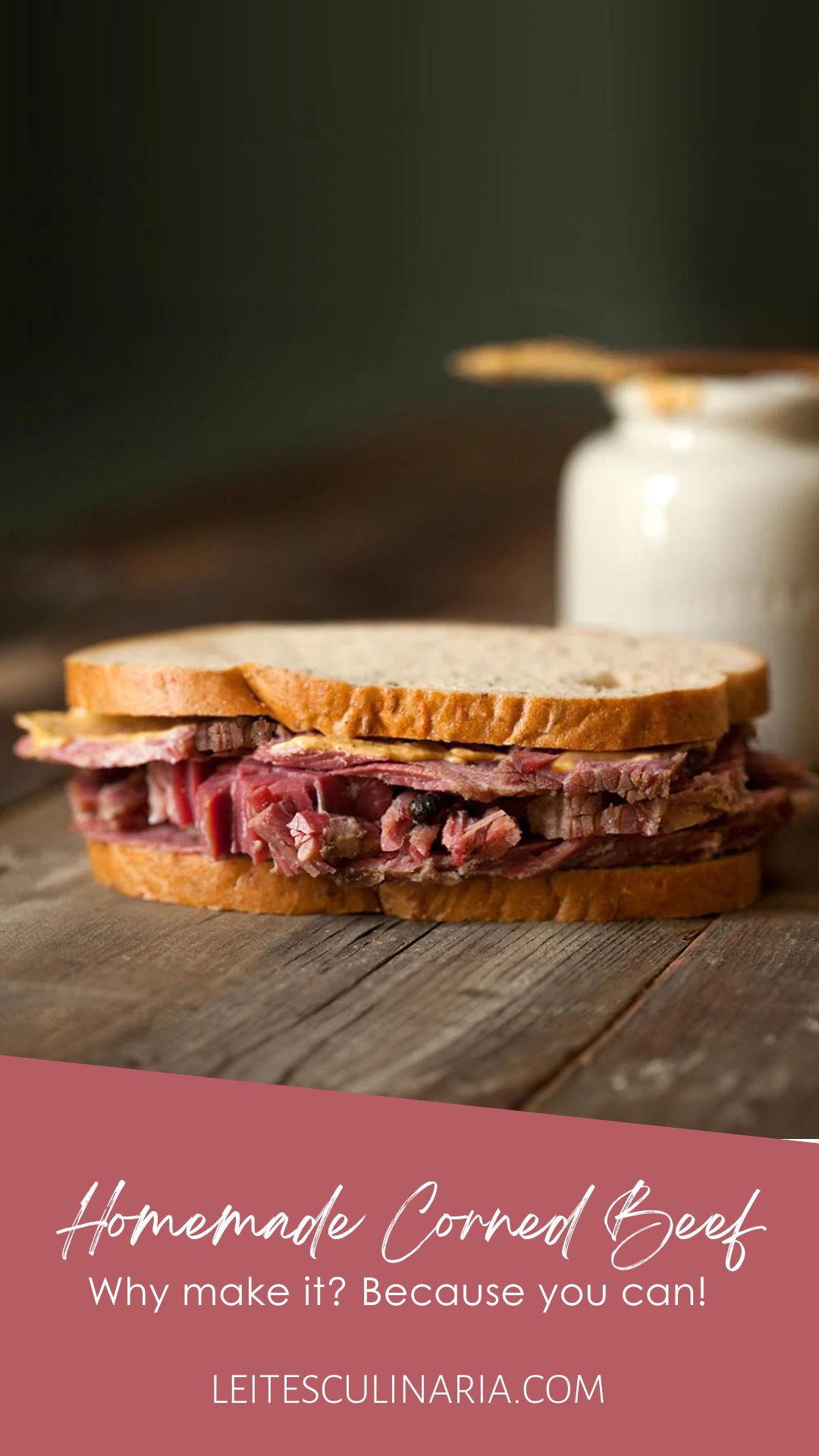
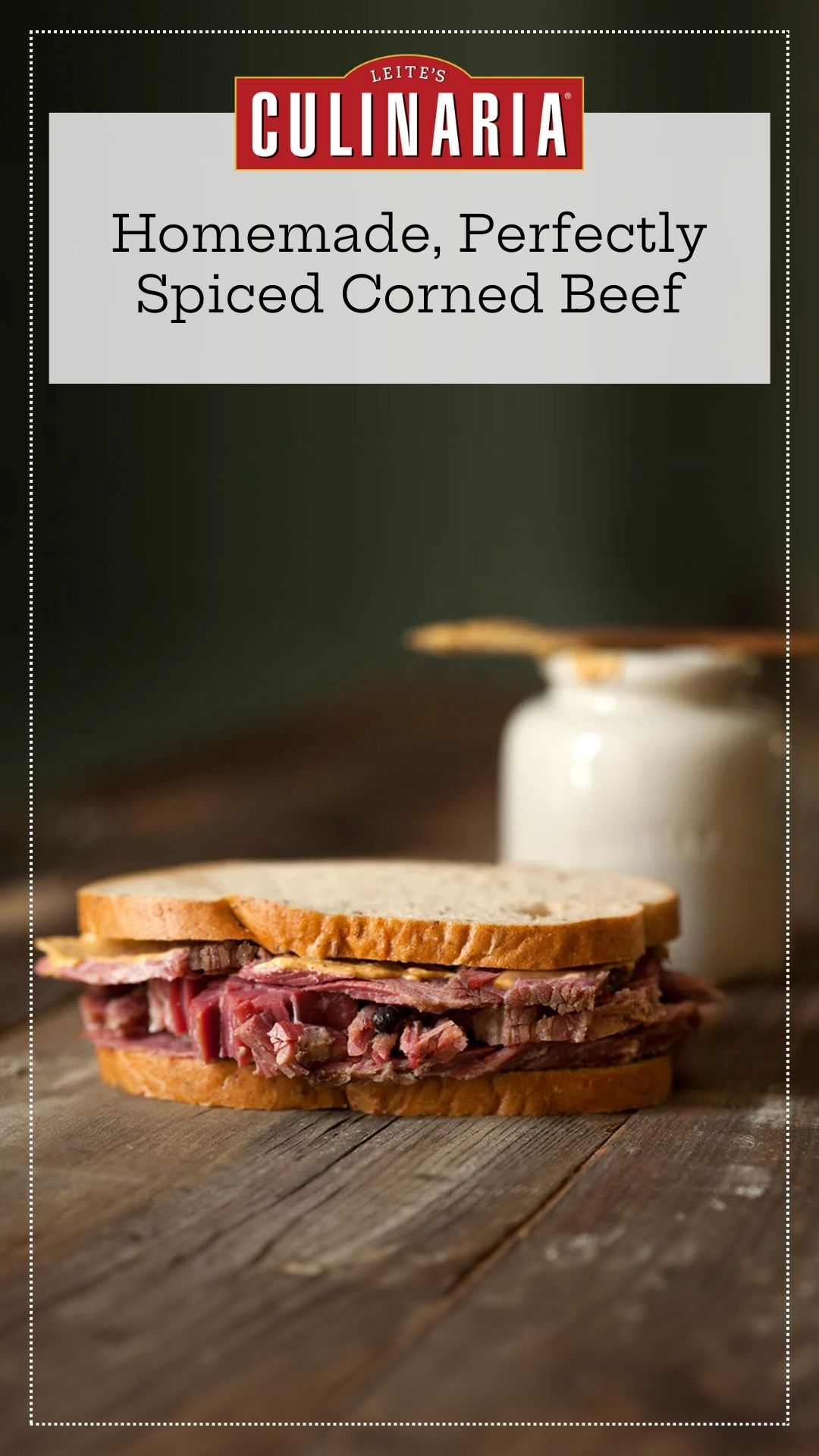
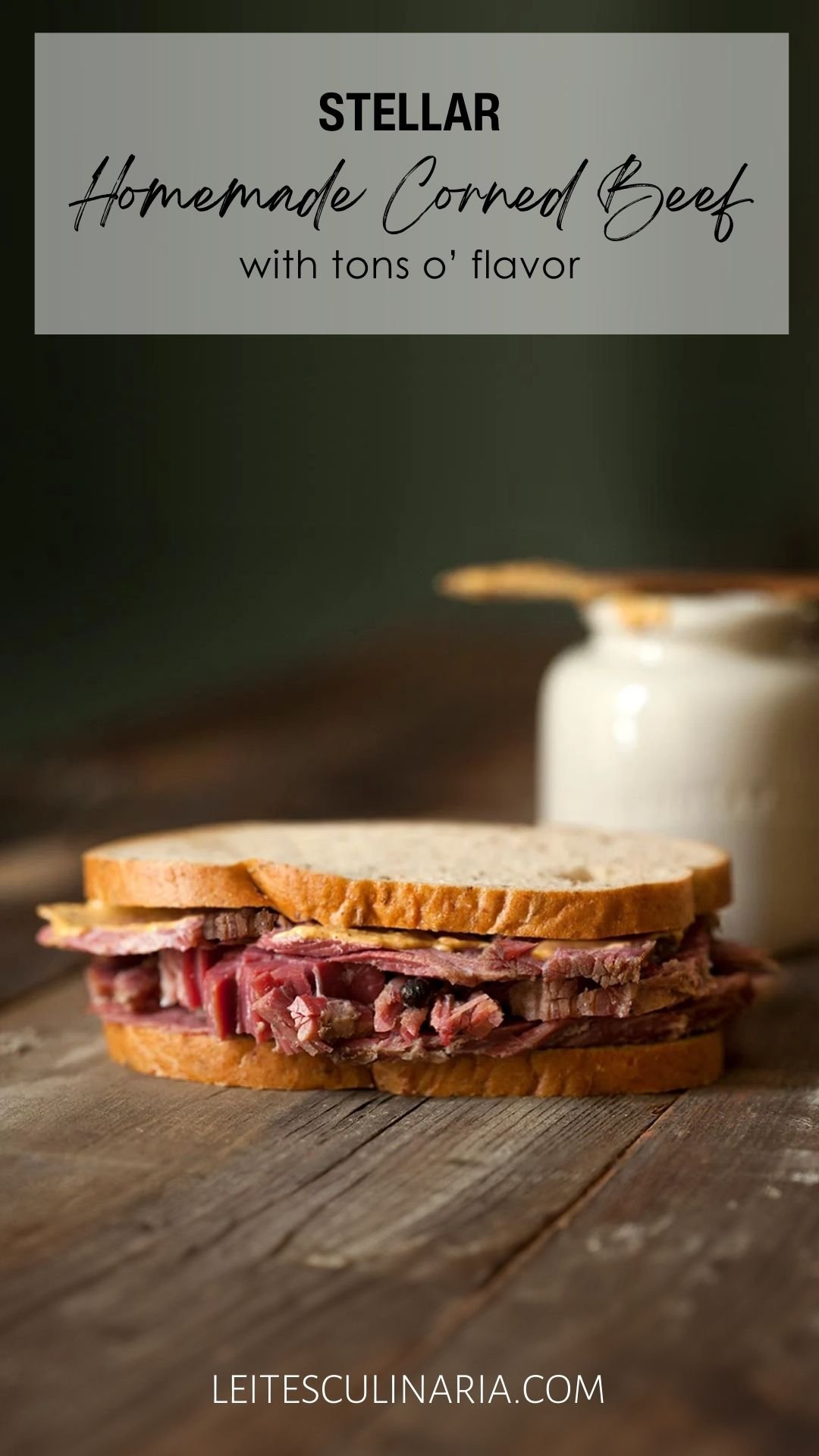

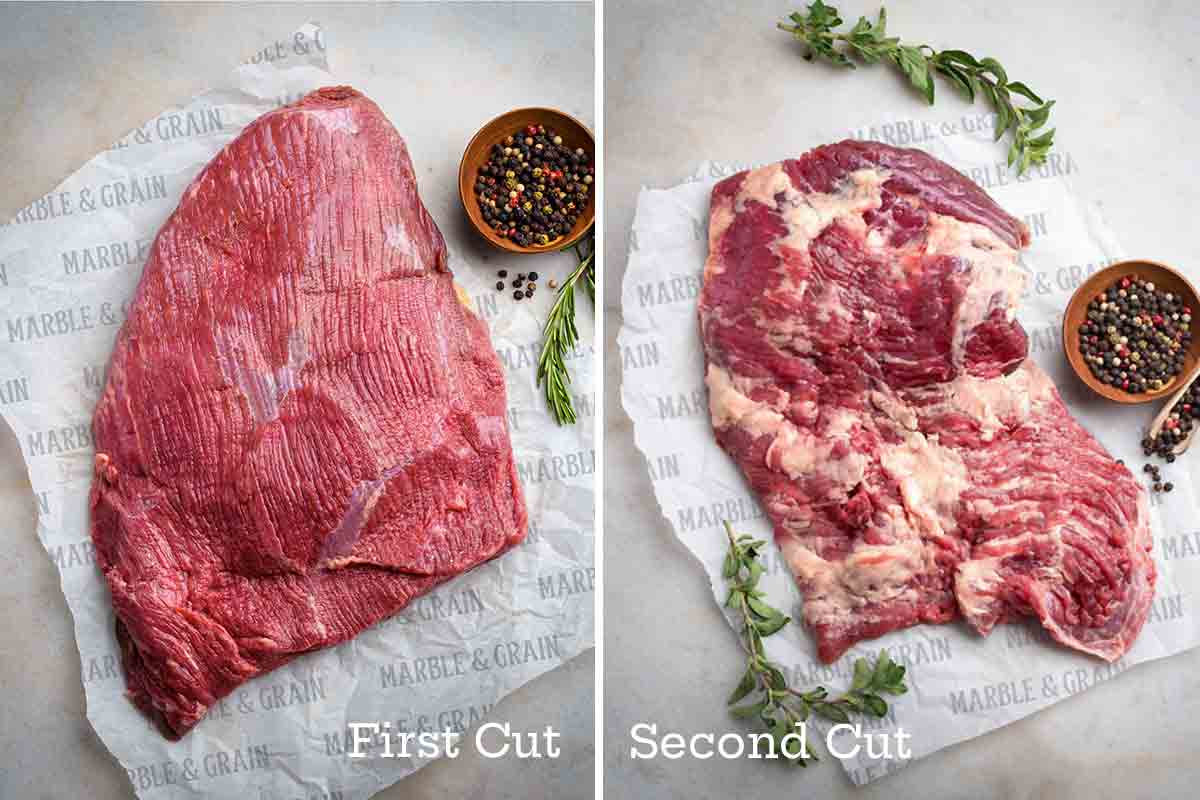
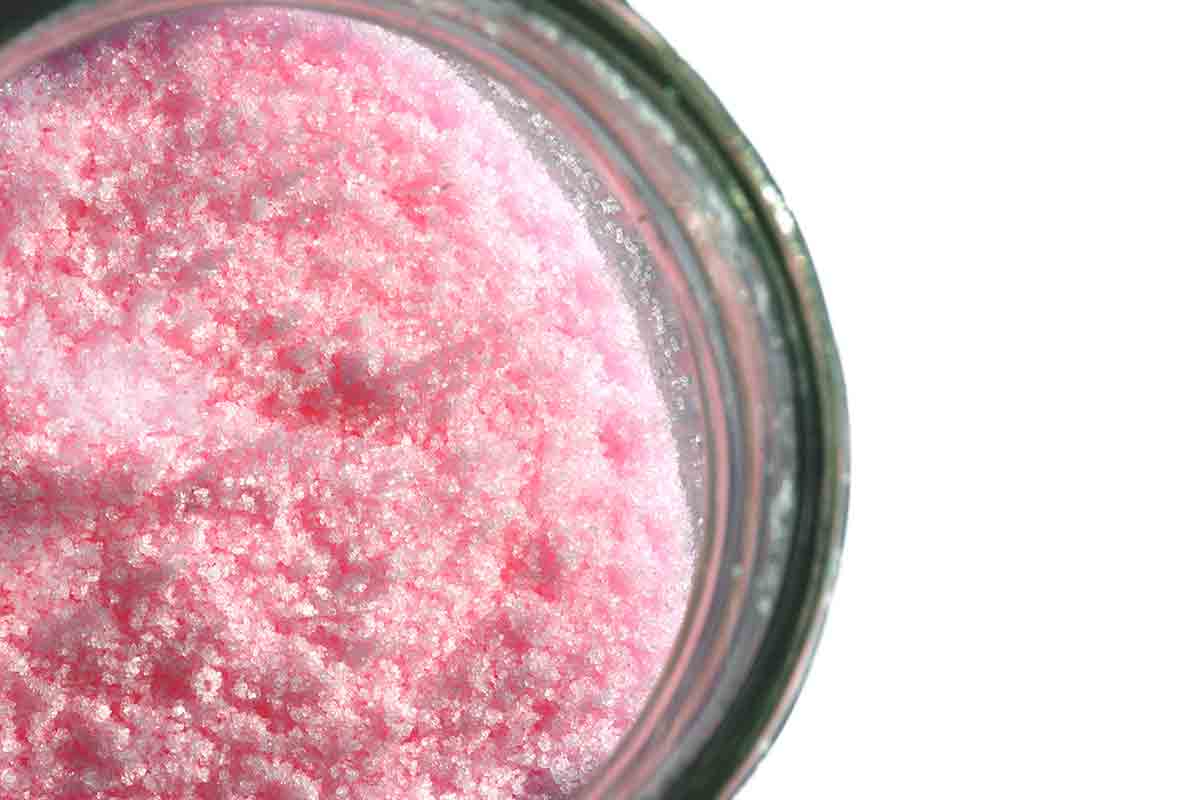
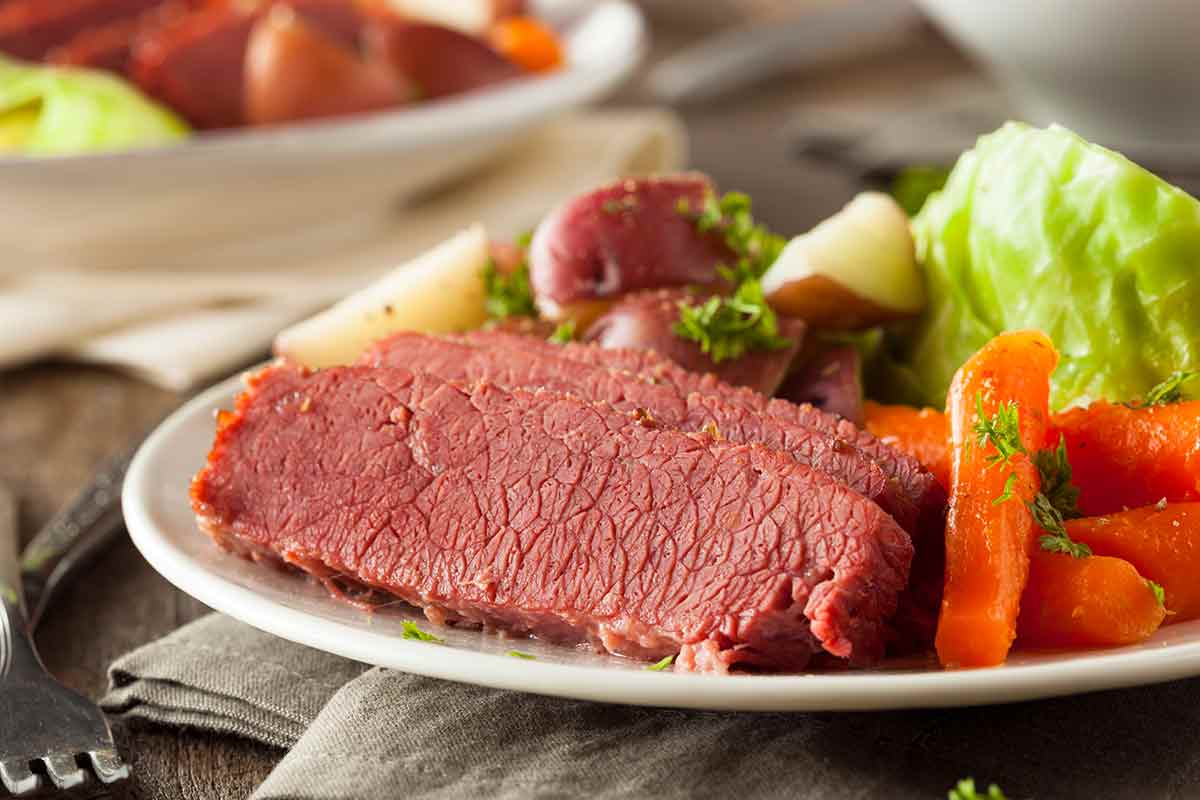
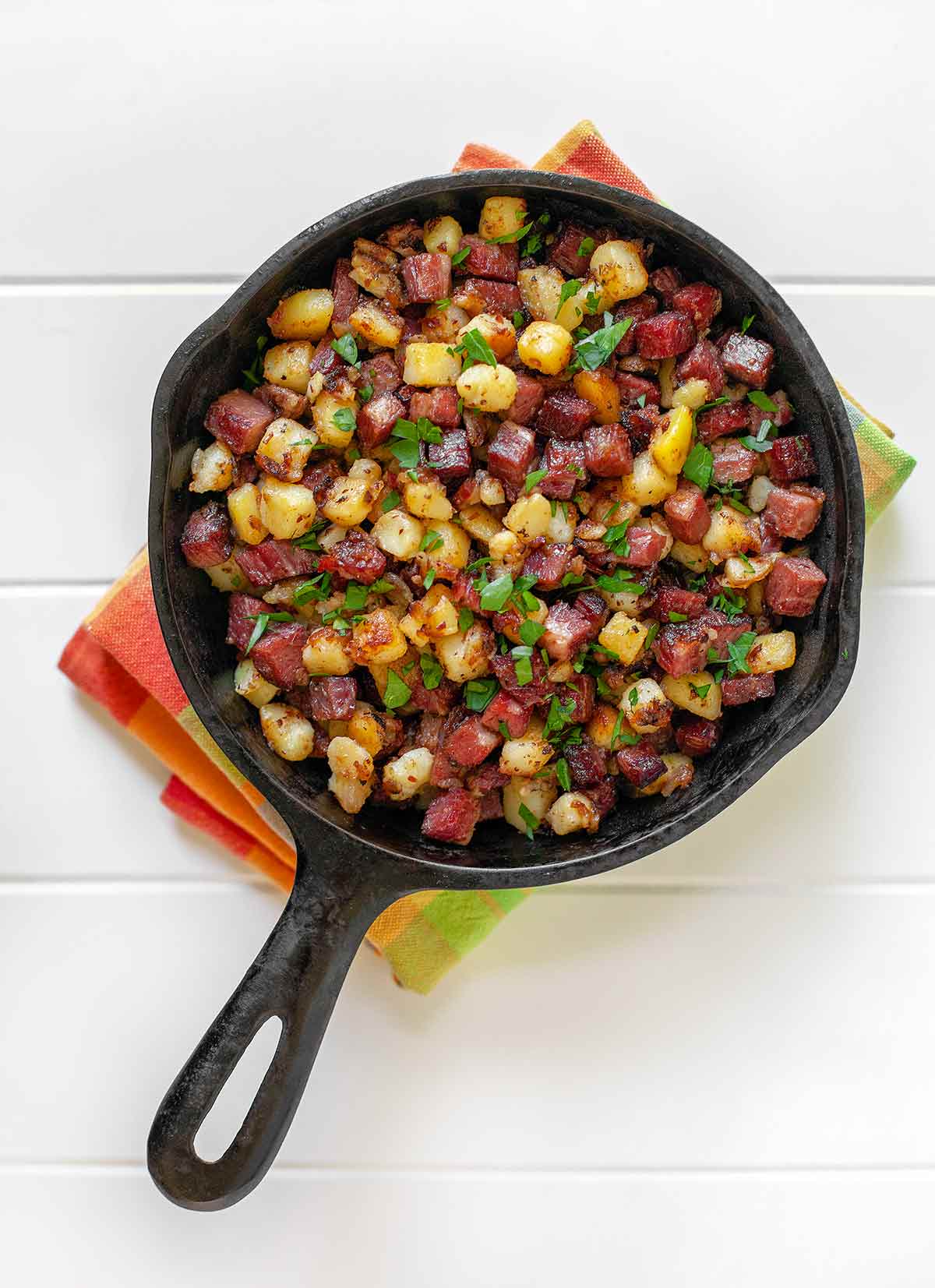
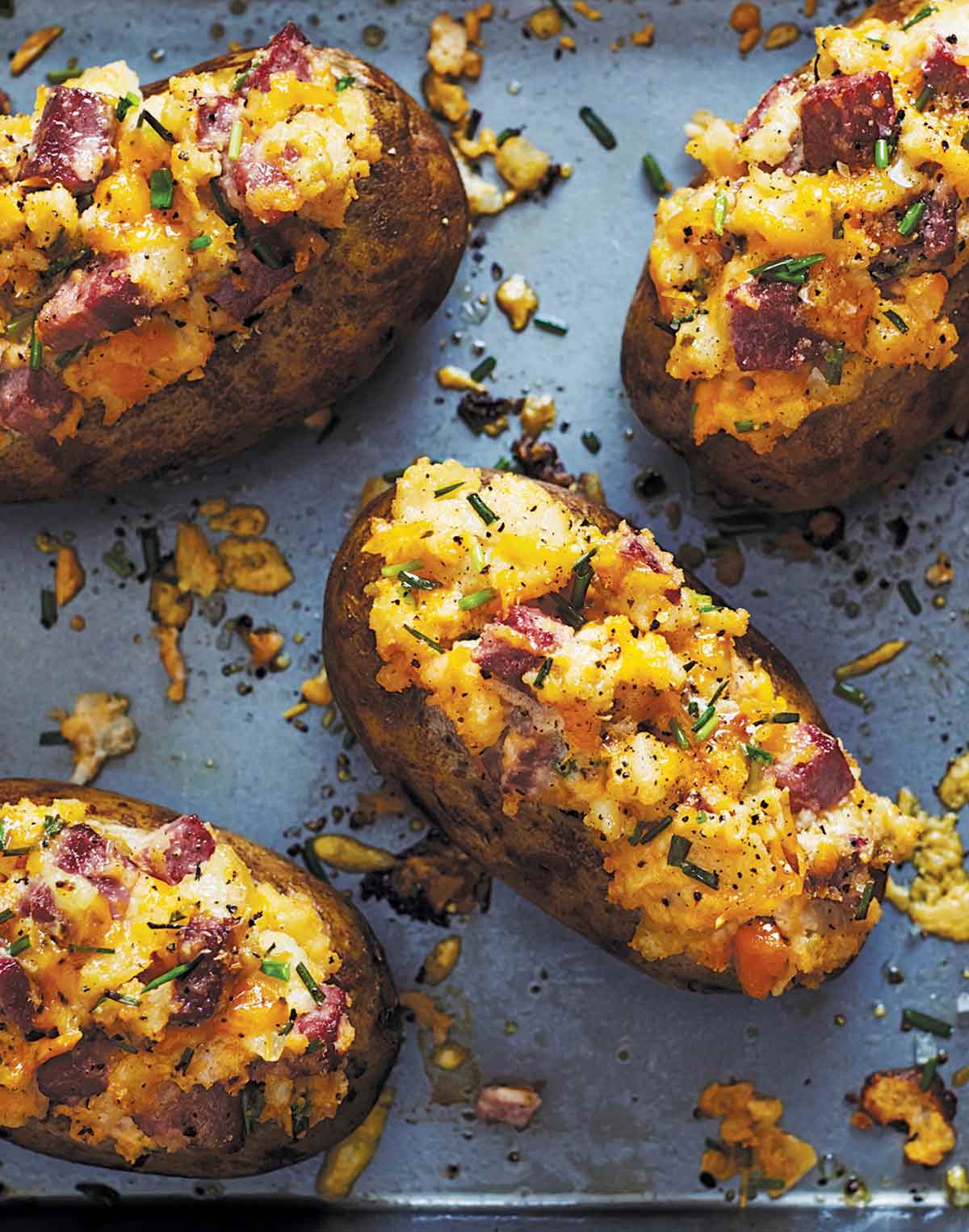
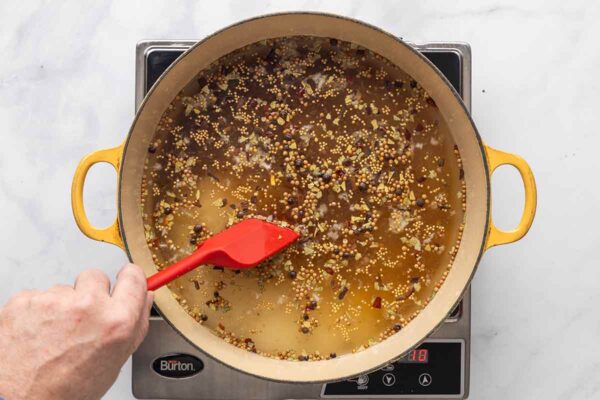
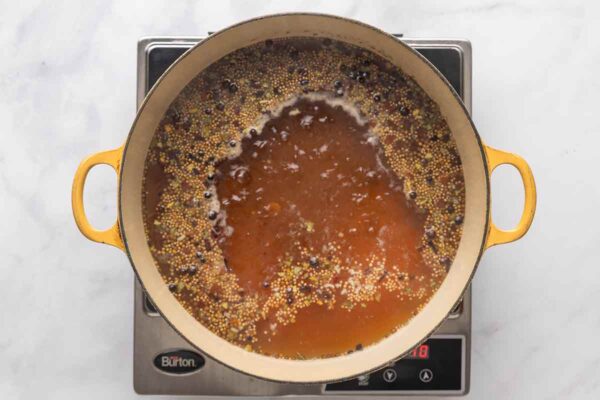
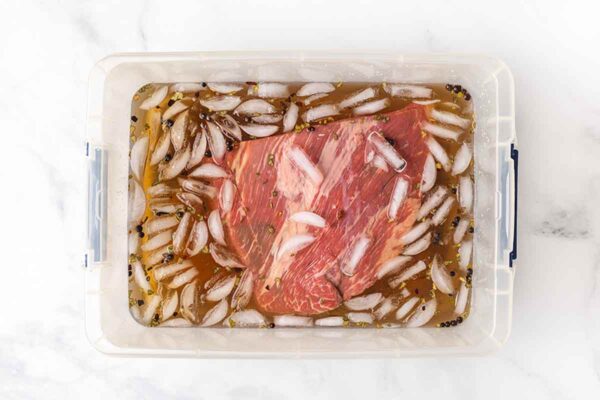

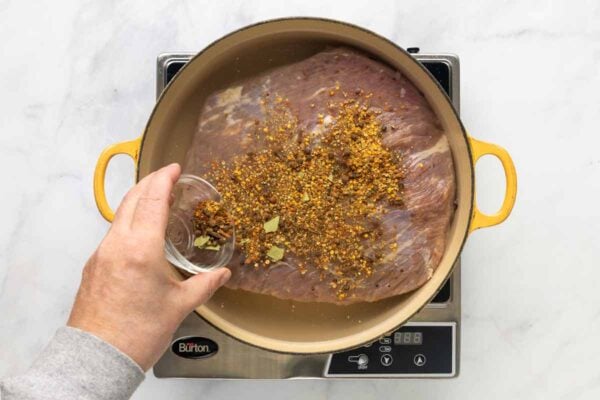












I like your new web design, but it has an unfortunate drawback. My rss feeder can’t detect new recipe entries anymore. It works fine with the giveaway section, though. Is there anything you can do about it? I miss my automatic notifications.
PS: I don’t want to sign up for your newsletter in order to keep my inbox for other purposes.
A longtime friend of Leite’s 😊
Nat, to help me trouble shoot, how long as this been going on? We created the new design a year ago.
I’ve just checked my feeder history. leitesculinaria.com/category/recipes/feed last entry 26 days ago “5 ways to use leftover chili”leitesculinaria.com/feed last entry one month ago “win a copy of the grazing table”
Hope that helps.
Nat, it does. But if you click the feed link https://leitesculinaria.com/category/recipes/feed, you see the most recent new recipe was yesterday, Feb. 21. It was the corned beef. Perhaps delete it and resubscribe?
I’ve deleted the feed and tried to recreate it. When entering leitesculinaria.com to search for feeds, it doesn’t detect that specific feed anymore. I have no idea what causes this, but I’ve attached a screenshot. My best guess is that some kind of flag got lost.
Thanks for supporting me 😊
Nat, try this one: https://feeds.feedblitz.com/leitesculinaria
👍🏆❤️
This is my go-to recipe for corned beef and corned venison. Hands down the best. Nice and tender. Venison I put on my smoker for an hour or so to get some smoke flavor. Then into a foil “boat” with some water and seal up the meat and boat with foil and leave for 3-4 hours on the smoker. It’s fantastic. I typically brine for 7-10 days.
David, I couldn’t agree with you more. I have a 5-pound brisket in brine at this very minute. And I’ll probably make another before St. Paddy’s Day. But…VENISON! What cut do you use?
I butcher my own. I use the rectangular piece from the hind quarters and also the “football”. I’ve also done the entire quarter. The rectangular piece is the best.
That sounds incredible, David! Thanks for that.
Looking to make this recipe in the Uk and considering kosher salt replacement with what I can buy, I am curious as to why the two options of salt on your recipe vary in quantity? Would I be safe to go somewhere in between the two measurements?
Will, kosher salt crystal sizes can vary dramatically from brand to brand, which is why we recommend weighing your salt. You’ll notice that both options ask for the same weight (450 grams) even though their volumes are different. This is because one has larger crystals and occupies a different volume than the other brand. You can use whatever large crystal salt is available to you, but I’d definitely recommend that you weigh out and use 450 grams of salt to get the correct concentration in your brine.
Not sure how I didn’t spot that! Thank you so much! Looking forward to making this
You’re welcome, Will. Please let us know how your corned beef turns out!